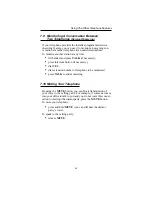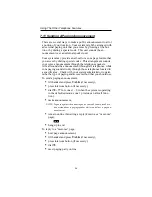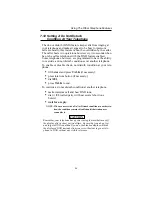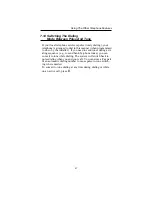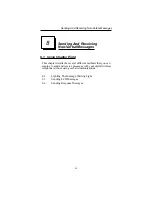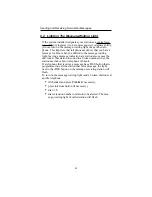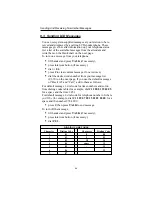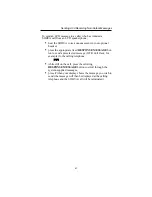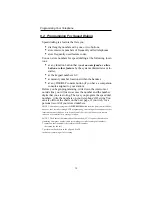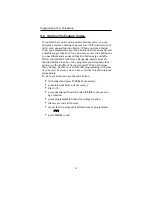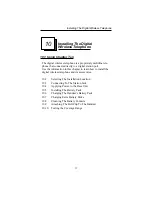
8.4 Sending Response Messages
By programming one or more RESPONSE MESSAGE but-
tons at unused function buttons F1–F4 on your digital wireless
telephone, you can respond with a variety of messages to many
calling situations. For example, if you call another station and
receive a busy signal or no answer, you can send one of 30
system-supplied messages, or you can send the same message
every time the situation arises. Further, you may at times re-
ceive SOHVA calls (while you are using the optional headset)
that you decide not to answer, and you can send a message to
the calling telephone’s display for the caller to read.
If you program a scrolling RESPONSE MESSAGE button at
your telephone, you may use it to scroll through and select any of
the system’s messages to send, allowing you to send a different
message every time. If you program a fixed RESPONSE MES-
SAGE button, you can send the same message every time in re-
sponse to a situation, which saves you the trouble of scrolling to
the message you want to send.
This section tells you how to use the RESPONSE MESSAGE
button(s) to send messages to LCD speakerphones. Refer to
the chapter titled Programming Your Telephone in this guide
for instructions on programming the RESPONSE MESSAGE
button(s).
To send an LCD message to an LCD speakerphone that you
call and receive busy signal or no answer,
•
while still on the call, press the appropriate fixed
RESPONSE MESSAGE button to send a preselected
message (“Call [your name],” for example) to the other
telephone,
–or–
•
while still on the call, press the scrolling
RESPONSE MESSAGE button to scroll through the
system-supplied messages,
•
press # when your display shows the message you wish to
send (the message will then be displayed at the called
telephone).
66
Sending And Receiving Non-Verbal Messages


